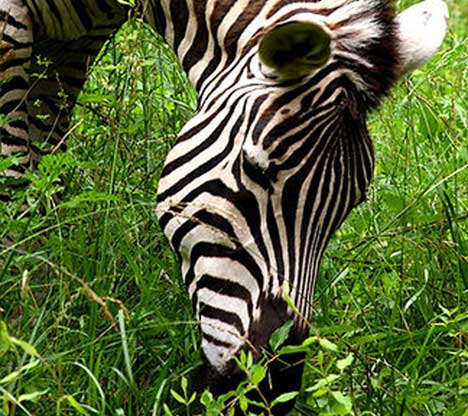Grants Zebra

The Grants Zebra obtains almost all its food by grazing, feeding selectively on certain grass species such as Pennisetum mezianum. As a result of an efficient hindgut digestive system, this species is able to survive upon coarse vegetation which would be inadequate to fulfil the energetic requirements of other ungulates. As such, the zebra is able to make long-distance movements in search of food, and is often the first grazing species to colonise unexploited areas of grassland.
The zebra’s removal of tougher growth has a valuable ecological role in allowing other ungulates to gain access to tender young growth. In some parts of its range the plains zebra is sedentary, while in others, such as the Serengeti, it undergoes seasonal movements in response to water availability .The Grants Zebra has a complex social system, with the main social unit consisting of a ‘harem’ which comprises a single male, one to six females, which are typically unrelated, and a number of offspring. The male has sole breeding access to the females but must fight off challenges from bachelor males. The fights are fierce, and involve biting as well as powerful strikes with the front feet and kicks with the rear feet.
If the challenger proves victorious, the male is driven away from the harem, and will usually join a group of bachelor males which have yet to make a successful challenge, are too old to compete, or have also been ousted. Interestingly, large herds of zebra sometimes form, usually when grazing, sleeping or moving between areas, which are composed of bachelor groups as well as harems. This multi-level social organisation is unusual, and more characteristic of primates, such as baboons, than ungulates.
